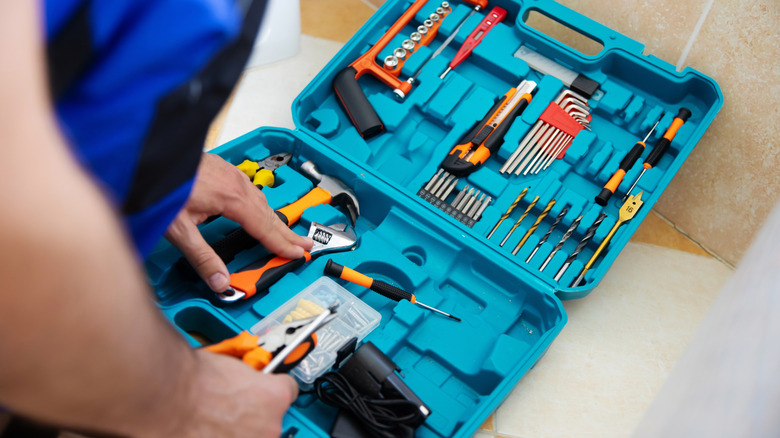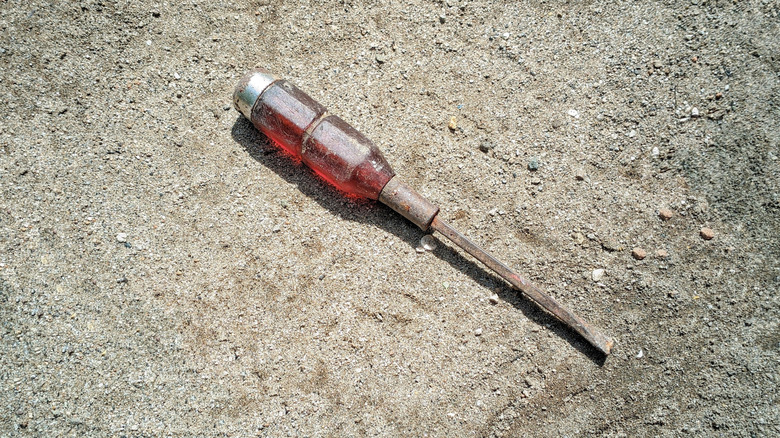Here's Why Your Toolbox Smells Gross And How To Fix It
When you crack open your toolbox to get working on a DIY project, you're expecting to see your tools, not smell them. But sometimes, opening up a toolbox can smell like butter gone bad, even if you haven't used the tools for any scent-heavy projects recently. What gives?
As it turns out, the sneaky spot that's hiding unwanted odor may actually be the tools themselves — specifically, the material the handles are made of. Certain plastic tool handles are made of a thermoplastic called cellulose acetate butyrate, also known as CAB. It's easy to clean, comfortable to hold, and resistant to physical and chemical damage, which made it a popular material in older toolboxes. If your tools' handles look like they're made of translucent or iridescent plastic, they may be CAB.
The cellulose in CAB will eventually begin to decompose. As CAB breaks down, it releases free acetic acid and butyric acid, both of which come with strong odors; acetic acid smells like vinegar, and butyric acid's smell has been described as stinky socks, rancid butter, or vomit. Unfortunately, CAB's decomposition process can't be reversed, but that doesn't mean you have to trash your tools just yet. There is a hack to control the gross smell: sealing the handles to lock away the stench.
How to seal tool handles to stop the stink
It may be unpleasant, but your first step is to do a sniff test to determine which of your tools are stinking up the toolbox. Once you've isolated the odor offenders, scrub down the tools' handles — this won't fix the smell, but it will prep the surface for the next step of sealing.
Now, it's time to seal the handles. Dip or paint the handles with shellac or lacquer for a harder finish, or try liquid silicone or silicone-based paint if you want a comfortable, easy-to-clean grip. Exact application instructions will vary based on your chosen sealing method, but as long as it's air-tight and covers all of the CAB plastic, it should keep the butyric acid smell locked away.
As the outer layer of CAB decomposes, you might also see your tools' clear handles turning white and flaky. That's cellulose residue, which you can clear away before sealing by dipping the handle in household ammonia for at least two minutes and then gently wiping. If you include this step, make sure the surface is fully clean and dry before sealing since ammonia will break down shellac.

